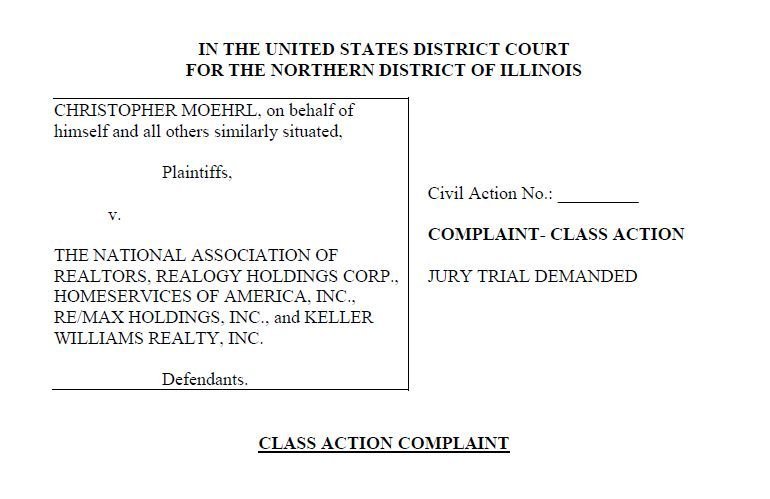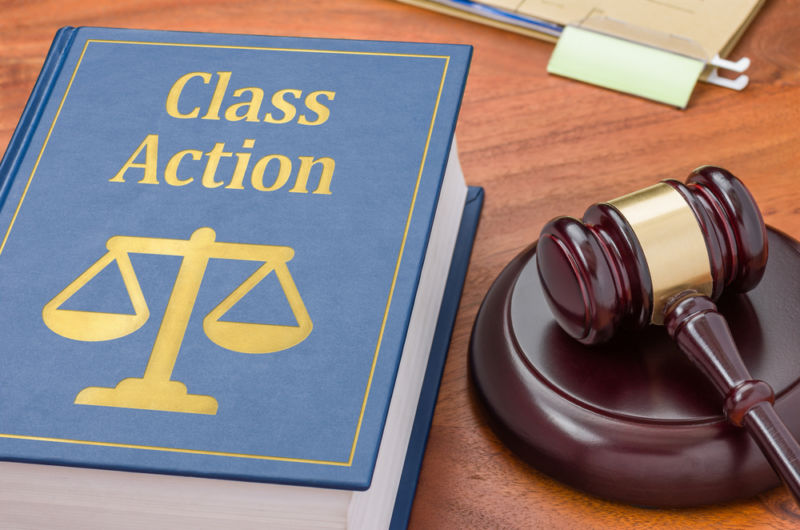Future FinTech Class Action Lawsuit: Understanding Your Rights
Wiki Article
Discovering Course Action Suits: What You Need to Know
Class action suits have become increasingly common in today's legal landscape, with individuals joining forces to look for remedy versus firms and companies. In this discussion, we will check out the ins and outs of class action lawsuits, clarifying their definition, the requirements for declaring, and the prospective advantages and drawbacks included. We will certainly dig into the steps entailed in a class action legal action and take a look at some recent landmark instances that have shaped this location of legislation. Understanding the intricacies and nuances of class activity suits is vital for anybody seeking justice in a cumulative manner, so allow's begin our expedition with each other.The Interpretation of Class Activity Claims
A course action legal action is a lawful action submitted by a group of people who have comparable cases against a defendant. Class action legal actions are typically brought when the number of prospective complainants is also big for specific claims to be sensible.Among the crucial elements of a course activity legal action is that the lead complainant, additionally understood as the course agent, represents the passions of all the class participants. The court assigns the lead complainant based on their capability to rather and properly represent the course. The lead complainant works very closely with the course activity lawyer to develop a solid situation and seek compensation or other remedies on part of the whole class.
In order for a course action claim to continue, the court must license the course. This means that the court determines that the claim satisfies particular needs, such as numerosity (a large adequate variety of course members), commonality (usual concerns of regulation or truth), typicality (the claims of the lead complainant are common of the course), and adequacy of depiction (the lead plaintiff and course guidance are qualified of representing the course's rate of interests) As soon as the class is licensed, the suit can relocate ahead, and any kind of judgment or settlement got to will apply to all class members unless they pick to opt-out.
Class action legal actions serve a vital objective in offering accessibility to justice for individuals who might not have the resources to pursue their cases individually. They likewise advertise efficiency in the legal system by settling similar insurance claims right into a solitary action, minimizing the burden on both the court and the celebrations entailed.
Requirements for Filing a Course Activity Lawsuit

One more demand is that the class should be adequately many. The precise variety of course members needed may vary depending on the jurisdiction and the nature of the case. It is usually anticipated that the class should be large enough that signing up with all the specific complainants into a single lawsuit is extra efficient than having numerous separate suits.
Additionally, it is necessary that the course representative, that is the specific or entity bringing the claim in support of the course, has normal insurance claims and defenses to those of the class participants. The agent should additionally have the ability to effectively and relatively represent the passions of the entire course.

Advantages and Disadvantages of Class Activity Claims
Class action suits offer both benefits and downsides for complainants and accuseds associated with the legal procedure. On the one hand, one of the significant benefits of course action lawsuits is that they give a reliable and economical method for individuals with comparable insurance claims to pursue justice jointly. By combining numerous comparable situations into one legal action, class activities enhance the legal procedure and save time and sources for both plaintiffs and defendants.An additional benefit of class activity suits is that they permit individuals with restricted sources to seek payment for their damages. In instances where the possible recuperation is tiny, individual lawsuits might not be financially feasible. Nonetheless, by joining pressures in a class action, find out plaintiffs can merge their sources and raise their opportunities of obtaining a reasonable resolution.
Furthermore, class activities can advertise social change by holding corporations liable for their activities. By accentuating widespread misbehavior or faulty items, course activities can push companies to alter their techniques, boost item safety and security, or carry out reforms.
Nevertheless, course activities also have downsides. One potential downside is that specific complainants might have restricted control over the lawsuits procedure and the best end result of the instance. The lead complainants and their lawyers generally make essential decisions in behalf of the entire class, which might not constantly straighten with the specific passions of each course member.
Furthermore, class actions can be time-consuming and lengthy, usually taking years to get to a resolution. The intricacy and size of these lawsuits can lead to hold-ups and long term lawsuits, which can be irritating for both defendants and complainants looking for a timely resolution.
Steps Involved in a Course Action Lawsuit
The procedure of a class activity claim usually begins with the recognition of a prospective class and the declaring of a grievance. Once a team of individuals that share similar cases against a defendant is recognized, the lead complainant, or class rep, files an issue in behalf of the whole class. This problem describes the alleged wrongdoing and looks for damages or various other alleviation for all members of the course.After the grievance is submitted, the court will establish whether the situation fulfills the demands for course accreditation. These needs usually consist of numerosity (a large adequate class), commonality (similar legal insurance claims), typicality (the lead plaintiff's claims are depictive of the class), and adequacy of depiction (the lead complainant and their attorney can properly represent the class's passions)
If the court accredits the course, notice is supplied to all prospective course participants, giving them the chance to opt-out if they desire to pursue their own private cases - Archer-Daniels-Midland class action lawsuit. If an adequate variety of course participants remain, the case will continue to the exploration stage, where both sides collect proof and information relevant to the claims
Complying with exploration, the celebrations might participate in negotiation arrangements or continue to test. If the instance mosts likely to trial and the class prevails, the court will determine the suitable damages or relief to be awarded to the class members.
Recent Landmark Class Action Lawsuits
With a solid understanding of the steps involved in a course action lawsuit, it is now important to examine some recent spots instances that have actually made a significant impact in the lawful landscape. Archer-Daniels-Midland class action lawsuit. These situations have not only shaped the means course activity claims are carried out however have actually likewise produced modifications in numerous marketsOne such site case is the Volkswagen emissions rumor, which caused the largest class activity negotiation in automobile history. In 2015, it was disclosed that Volkswagen had installed software in their lorries to rip off emissions examinations. This deception affected numerous customers worldwide, resulting in a class activity legal action. The negotiation reached in 2016 totaled up to approximately $15 billion, making up afflicted vehicle proprietors and penalizing on Volkswagen.
Another significant instance is the Johnson & Johnson talcum powder suit. Thousands of women submitted lawsuits against the business, asserting that their talcum powder products caused ovarian cancer cells.
These current spots cases demonstrate the power of course activity lawsuits in holding corporations liable for their activities and looking for justice for affected individuals. They serve as instances of just how course action suits can bring around substantial adjustments and protect the legal rights of customers.
Verdict
In verdict, class action lawsuits are check a lawful system that allows a group of people to collectively seek justice for an usual complaint. Comprehending the actions and browse this site requirements entailed in submitting a class activity claim is vital for individuals seeking to seek this legal avenue.One of the vital aspects of a class activity suit is that the lead plaintiff, additionally understood as the course agent, represents the passions of all the course members.In order for a course action legal action to continue, the court must license the class. This means that the court establishes that the suit meets particular demands, such as numerosity (a big enough number of course members), commonality (common inquiries of regulation or fact), typicality (the claims of the lead plaintiff are regular of the class), and competence of depiction (the lead plaintiff and course guidance are qualified of standing for the course's rate of interests) Once the class is licensed, the legal action can move onward, and any judgment or negotiation reached will apply to all class members unless they select to opt-out.
The procedure of a class action legal action usually starts with the identification of a prospective course and the filing of a grievance.
Report this wiki page